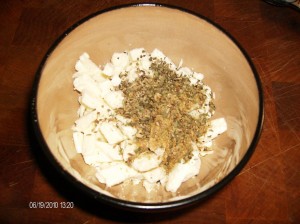Coffee
Coffee is not just a morning indulgence nor, from historical writings, as benign a drink as one would have assumed. Coffee is a very Middle Eastern beverage that at one point rivaled wine in consumption and the indulgences associated with wine houses.
Coffee Plant: of the genus Coffea; the description is an evergreen bush from which the seeds (also known as beans) are the prized fruit of the bush. Coffea Arabica and Coffea canephora are the two most commonly grown in Latin America, Southeast Asia, and Africa. (Wikipidea).
Origin: Coffee (Coffea) is thought to have started in Ethiopia then moved to the Arabian peninsula, via Sufi monasteries, migrating north then across the Atlantic. This movement followed trade but not the exact route of the Silk Road. (anonymous, http://www.coffeeresearch.org/coffee/history.htm)
Making of Coffee: There were more then a few travelers, priests and scholars who wrote of coffee and the making of this popular drink. In Coffee and Coffeehouses: The Rise of the Coffeehouse, one of the period commenter’s is Jaziri, says of the descriptions and preparations of coffee “…in the summer the Arabs use the husks, and in the winter the kernels of the bean, to benefit from the application of “cold” nature of the husks and in the summer, and the “hot” nature of the kernels in winter.”. Another example is from Kha’ir Beg “cooked from the husks of the seed called bunn that comes from Yemen”. A third example would be that of the Jesuit priest who say “water boiled with the rind of the fruit which they call Bune. (Hattox, pp. 83-84)
The actual preparation was written by Niebhur as the bean was roasted slightly pounded then had boiling water poured over the grounds to produce a pleasant tea like beverage. This type of coffee qahwa qishirya, with the flavoring of tea, is still served today in Yemen and tastes like an oddly spiced tea. (Hattox, pp. 85). I would be curious to try, what sounds to be a milder version of what most people consider a strong stimulating drink.
Both a mortar and a mill were used for grinding of the bean as well as the husk after being roasted. These methods were noted by the Flemish traveler Joannes Cotovicus. Though in later years, coffee millers took to the supplying of ground so that the individual coffee houses no longer had to worry about roasting and grinding their own coffee. (Hattox, pp. 85)
The coffee pot has been sketched as a squat round bodied pot “tinned inside and out” Hattox, pp. 86) with a narrow pouring spout and a side handle either sticking straight out or curved.
I have included a slightly out of period picture. The description of this by the seller on Etsy http://www.etsy.com/listing/35229892/antique-middle-eastern-brass-coffee-pot
“The Arab coffee pot is called ‘Dallah’, a traditional pot with a long spout, used to make Arabic coffee. Dallah a symbol of welcome as coffee is always served to guests.
This particular pot was obviously created as a functional piece, likely for the makers personal use and presumably spent some time warming in the embers of a desert fire. Based on the crude decorative style I believe the piece dates to the 1800’s. I am uncertain as to the country of origin, however research suggests that the bird images used to decorate this dallah, might be that of a Simorgh, which is a famous mythical giant bird in Persian literature.
MEASUREMENTS:
Height – 10″
Mouth – 3 1/4″
Width – 9 1/4″ (spout to handle)
Base – 3 1/8″
Weight – 1.12 lbs (28 oz)
IMPORTANT:
I should – CLARIFY – that this IS NOT the EXACT coffee pot photographed in the National Geographic magazine, but rather the former owner used this publication source as a research reference for identifying the type of pot and it’s origin. They didn’t have the advantage of internet research back in the 1970’s. 
coffee pot pics
Serving: Coffee was served in small cups as seen in the sketches provided by Hattox in Coffee and Coffeehouses, by both coffee houses and by street vendors.
Venues: Coffeehouses were considers venues of social gathering for men but also where chess, backgammon and eventually card games were played, some times for stakes. These houses were also the places where speech was more free and some times seditious plans, so much so that the sultanate Murat IV the forth had the “meeting places of the people, and of mutinous soldiers” torn down under the guise of places of fire hazards. (Hattox, pp. 102)
Coffees part in history is fairly colorful and well traveled. There is no denying that coffee like tea and wine has a place in the great drinks of history.
References:
http://en.wikipedia.org/wiki/Coffee
http://www.coffeeresearch.org/coffee/history.htm
Hattox, R., (1985). Coffee and Coffehouses.
http://www.etsy.com/listing/35229892/antique-middle-eastern-brass-coffee-pot













































